Improvements planned for patient access to clinic
Next month, The Emory Clinic will begin a project to expand and improve patient access to buildings A, B, and C in anticipation of construction of the planned Emory University Hospital bed tower. This project will conclude in August 2012 in time for the start of the new bed tower construction. The new bed tower, slated for completion in 2016, will be located directly in front of Clinic B, which means that the current patient drop-off at Clinic B will be closed once site preparation for the bed tower begins.
 |
|
| Alison Douis |
|
 |
|
| Don Brunn |
|
As a result, the patient drop-off behind Clinic A and Winship Cancer Institute is being expanded and improved. "This presents an opportunity to enhance traffic flow for both people and cars and make arrival at the clinic safer and more welcoming for everyone," says Alison Douis, senior manager, facility planning.
The project will add lanes to make valet parking easier and faster and improve self-parking by creating an elevated, "conditioned" (heated and cooled) bridge from the Lowergate parking deck to the clinic. "Pedestrians will no longer have to compete with cars on Lowergate," says Douis.
In addition to this project to expand and improve pedestrian and vehicle access, the clinic has undertaken recent and ongoing moves of various specialty sections among buildings A, B, 1525, and the Medical Office Tower at Emory University Hospital Midtown. These changes are part of redesign and renovation projects to align clinic demand with available capacity. The new space will be more inviting for patients and tailored more closely to meet the needs of physicians as well.
"We're making infrastructure changes in lieu of building the new outpatient facility we had planned several years ago," says Don Brunn, clinic COO. "We're still experiencing the growth we anticipated, and we're making changes to meet our space needs and enhance these facilities for patients and their families."
Integrating Saint Joseph's and Emory: The steps ahead
| |
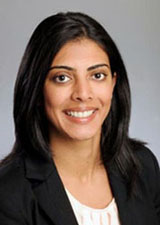 |
| |
Sonal Owings |
One in a series of profiles of people in the Woodruff Health Sciences Center
Now that the ink has dried on the partnership agreement between Emory Healthcare and Saint Joseph's Health System, a major task ahead is transitioning Saint Joseph's operating and clinical systems into Emory Healthcare's. One person at the center of this process is Sonal Owings, Emory Healthcare's integration strategies administrator.
Fortunately, Owings has traveled this road before, having helped lead the still-ongoing transition process for Emory Johns Creek Hospital after Emory Healthcare purchased HCA's interest in that facility last March. Saint Joseph's is bigger and much older than Emory Johns Creek, with a larger cultural difference, including affiliation with the Catholic Church.
Biostats
• Succession of positions at Emory Healthcare: Integration Strategies Administrator (current), Administrator of Clinic Operations, Managed Care Associate, Administrative Fellow
• Intern, Economic Medical Unit, Aetna
• MS, Health Services Admin, Univ of Michigan
• BS, Business Admin, Univ of Georgia
|
|
With Emory Johns Creek, Owings first identified areas for transition—human resources, finances, materials management, billing, collections, and electronic medical records, to name a few—and then paired up the appropriate program heads from Emory Johns Creek and Emory Healthcare, assigning a project manager for each transition area. Much of her time has been spent in meetings with these managers, examining the task list of what needs to be done, measuring progress, and identifying problems and risks.
The goal for Saint Joseph's is to complete stage 1 of the transition (human resources, materials management, payroll, and a mini-conversion of the financial system) in early 2012. Stage 2 will involve changing over the entire clinical system, from medical records to billing and collections.
Owings, who reports to Emory Healthcare CFO Jimmy Hatcher, says her job is part "glorified project manager, part cat herder, and part troubleshooter." The aspect of her job that is often the hardest is alleviating fear and building trust. During any merger, employees are understandably concerned about their jobs and what will change. As for jobs, at Emory Johns Creek, no employee was laid off due to the transition. As for culture, Owings says, "If we can't move these hospitals into the Emory Healthcare system and processes while still maintaining their own community identity and culture, we will have failed."
Owings likes to say that being the first integration strategies administrator is not the only Emory Healthcare "guinea pig" job she has held. She was in the first class of Emory Healthcare's administrative fellows in 2004-2005, mentored by Shari Capers, AVP for strategic planning. Then, after working for Patrick Hammond, chief market services officer, for more than two years, she served as administrator of clinic operations for dermatology, the flagship clinic section implementing initiatives to create the ideal patient experience at The Emory Clinic.
"My offer stands": Nurse donates kidney to patient
| |
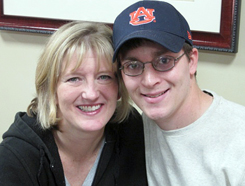 |
| |
Allison Batson with Clay Taber |
| |
|
Allison Batson has long experience as a transplant nurse at Emory University Hospital. She has seen many patients go on to live full and productive lives, and she has grieved at the loss of others for whom a matching organ could not be found. When patient Clay Taber, a 23-year-old suffering from kidney failure, arrived on her floor, she knew he would have a hard time finding a match with his rare blood type.
For Batson, this patient was different. "Immediately when Clay came onto our unit, he became a special patient that everyone just gravitated to," she says. "Here was this young many with everything ahead of him, and he was fighting for his life. I have children his age, and I felt the same kind of pain his mother was feeling. Something inside me said I needed to do more."
And she could. Batson had the same O-negative blood type as Taber. Last summer, when Taber's mother was found not to be a match, Batson repeated the offer she had made previously to donate her own kidney. The operation took place last week, and both are recovering well.
"People have asked me why I would do this for a stranger or why I would risk my own life or health," she says. "My answer is, because I can. Here is this young man right in front of me who needs help today, and I am in a position to help him today. If what I do for Clay causes more awareness that live organ donation is a possibility, then I can only hope that other lives will be saved because of my actions." Read more.
New construction at Yerkes
Yerkes National Primate Research Center broke ground last month on a new $15 million research building (above) and a three-story addition to the neuroscience research facility (below left).
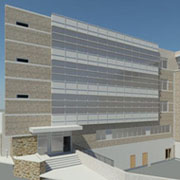 |
| Three-story addition to the neuroscience research facility |
The new 19,800-square-foot building will house researchers focusing on infectious disease and transplant medicine, says Stuart Zola, the center's director. The facility is being built with NIH stimulus funds, and the expansion is expected to create up to 20 new jobs, including researchers and animal care technicians. The facility will address major unmet needs in tuberculosis and other emerging infectious disease threats and will further the development of immune therapies to reduce morbidity and mortality associated with bone marrow, organ, and tissue transplants.
The addition to the neuroscience research facility will house the Emory
Institute for Drug Discovery and the Center for Innovative Genetics.
Growing leaders in health sciences
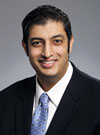 |
|
| Sanjay Dhall |
|
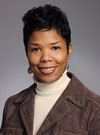 |
|
| Kaiya Valentine |
|
 |
|
| Kathryn Yount |
|
Some of the leaders who will share their personal experiences with the 2012 class of the Woodruff Leadership Academy (WLA) include Horst Schulze, CEO of the West Paces Hotel Group, and Joe Rogers, CEO of Waffle House. Their presentations are just two of many designed to give Emory's emerging leaders the skills and knowledge to strengthen their leadership potential.
The semester-long WLA course taps employees from across health sciences, such as Sanjay Dhall, chief of neurosurgery at Grady Hospital; Kaiya Valentine, unit director of cardiovascular surgery at Emory University Hospital Midtown; and Kathryn Yount, associate professor of global health in the Rollins School of Public Health. WLA presenters also include WHSC and university leaders, and faculty from Goizueta Business School, with topics ranging from finances and leadership styles to conflict negotiation, collaboration and influence, and quality initiatives.
Participants this year also will hear from Lynda Barrett, director of WHSC strategic planning, on WHSC's goals over the next three years; Penny Castellano, chief medical and quality officer of The Emory Clinic, on leadership in action; Rick Gilkey of the Goizueta Business School on emotional intelligence; and Gary Teal, WHSC chief administrative officer, on lessons learned from Robert W. Woodruff's life and business decisions.
Embolization device repairs formerly untreatable aneurysms
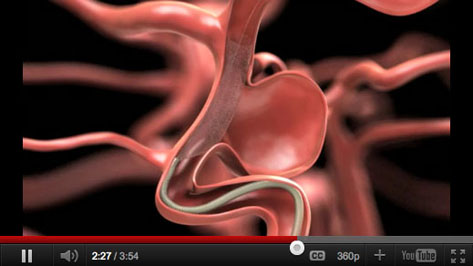 |
| Click on the image above to watch a video on the device. |
Emory neurosurgeons now have a device to treat patients with aneurysms that previously were deemed untreatable.
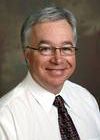 |
|
| Jacques Dion |
|
Jacques Dion, director of interventional neuroradiology and professor of radiology and neurosurgery in the medical school, is among the first few physicians in the country and the first in Georgia to use the new Pipeline Embolization Device (PED) to treat large or giant wide-necked aneurysms in the internal carotid artery, the major artery that supplies blood to the front of the brain. The metal PED is placed across the neck or opening of the aneurysm with the help of a catheter placed inside the blood vessel. The procedure redirects blood flow away from the aneurysm, causing the blood that remains in the aneurysm to form a clot to prevent the aneurysm from rupturing.
Other existing treatments are often more invasive, leading to longer hospital stays and greater risk for complications, and they are thus contraindicated for use in patients who are medically fragile.
|
|
 |
|
From the Executive VP
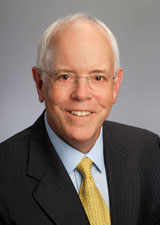 |
| Wright Caughman |
|
Guest lecturer to focus on impact of health care reform
I hope you had a pleasant and relaxing holiday and that you're looking forward to another outstanding year in 2012. As we enter not only a new year, but an election year, one of the topics on everyone's mind is the potential impact of impending health care reform. What will it mean for those of us whose career is in health sciences? What will it mean for our students or the Woodruff Health Sciences Center (WHSC) as an employer? And most important, what will it mean for the patients we serve?
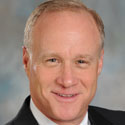 |
| Steve Lipstein |
|
Certainly no one has definitive answers to these questions yet, but I'm delighted that later this month we'll all have the opportunity to hear what one of the nation's most renowned health care thought leaders has to say on the subject. On January 31, Steven Lipstein, Emory alumnus and president and CEO of BJC HealthCare, will deliver a Future Makers lecture here at Emory.
Mr. Lipstein is uniquely qualified to understand the ramifications of health care reform. As the head of one of the nation's largest health care organizations, he oversees 13 hospitals (including two of the premier teaching hospitals in the country), 26,000 employees, and an annual budget of $3.5 billion.
He is Chairman of the Board of Directors of the St. Louis Federal Reserve Bank and serves on the Board of Directors of Ameren, an electrical utility company with assets of $24 billion. In 2010, he was appointed by the US Comptroller General as Vice Chair of the Board of the Patient Centered Outcomes Research Institute (PCORI), established under the Patient Protection and Affordable Care Act.
I've known Steve Lipstein for many years, and I have great respect for his insight—particularly around this timely and critically important topic. He has a unique perspective based on a stellar career in health care, and I'm confident that we'll all be enlightened and engaged by his presentation.
As someone who has heard Mr. Lipstein's enlightening and energizing presentations firsthand on multiple occasions, I can't recommend strongly enough that you try to make time to attend. The opportunity to share his vision is something no one in the health care community should miss.
Thank you, and best wishes for a happy and healthy 2012.
Please let me know your thoughts and suggestions at (evphafeedback@emory.edu)
In brief
Emory joins heart failure network
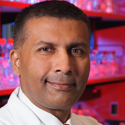 |
|
| Javed Butler |
|
Emory's Center for Heart Failure and Transplantation was selected to be a member of the Clinical Heart Failure Research Network, sponsored by the National Heart, Lung and Blood Institute. Cardiologist Javed Butler is principal investigator. The selection comes with a grant covering a seven-year funding cycle that will give Emory access to large-scale studies aimed at both chronic and acute heart failure. Read more about Butler's work in heart failure.
$11 million grant to test treatment for PTSD
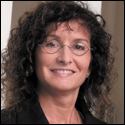 |
|
| Barbara Rothbaum |
|
Barbara Rothbaum (psychiatry) and researchers at the University of Southern California and New York-Presbyterian/ Weill Cornell Medical Center received an $11 million Department of Defense grant to test two different types of exposure therapy combined with the drug D-Cycloserine for treatment of post-traumatic stress disorder. Read more.
Nursing receives grant to study HIV-related health disparities
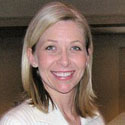 |
| Drenna Waldrop-Valverde |
|
Nursing and public health faculty member Drenna Waldrop-Valverde received a five-year, $2.9 million NIH grant to study effects of health literacy on medication compliance among African Americans with HIV/AIDS. Read more.
Renovations completed at health sciences library
The Woodruff Health Sciences Center Library now has a new ground-level "front" entrance from the central courtyard across from the Whitehead Biomedical Research Building, replacing the previous second-floor entrance from inside the building. The interior of the library has undergone extensive renovation as well, with many books and journals (now available online) recycled or moved to storage to make room for collaboration spaces and digital learning areas. The library's signature marble staircase is still in place, as is the Calhoun Room. Named for the family that donated funds to start the library in 1923, this meeting space houses a small medical history museum.
Notable
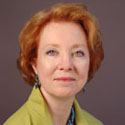 |
| Deborah Watkins Bruner |
|
Deborah Watkins Bruner was named the Robert W. Woodruff Professor of Nursing. Bruner is the first nurse to hold a Woodruff professorship since it was established in 1979 with a donation from the Emily and Ernest Woodruff Fund.
Read more.
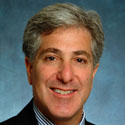 |
| Allan Levey |
|
Allan Levey is the inaugural holder of the Betty Gage Holland Chair in Neurology in the medical school. The Jim Cox Jr. Foundation established the chair. Holland, who died in 2004, was married to Cox, who presided over Cox Enterprises until his death in 1974. Cox's nephew, James Kennedy, and his wife, Sarah, recently gave $5 million to Emory for Alzheimer's research. Levey directs the Emory Alzheimer's Disease Research Center and chairs neurology. Read more about the Holland Chair and about the Kennedy donation.
Events
Jan. 31: Future Makers lecture series presents Steven Lipstein, CEO of BJC Healthcare, on health care reform, 5 p.m., WHSCAB auditorium. More info.
Feb. 1: Healthcare Innovation Symposium on fixing U.S. health care, 11:30 a.m., CNR auditorium. More info.
Feb. 9: 3rd Annual Academic & Industry Intersection Conference, 11:30 a.m. to 5:30 p.m., Emory Conference Center. Register.
Feb. 15: State of the WHSC 2012, 4:30 p.m. WHSC auditorium. RSVP.
|

